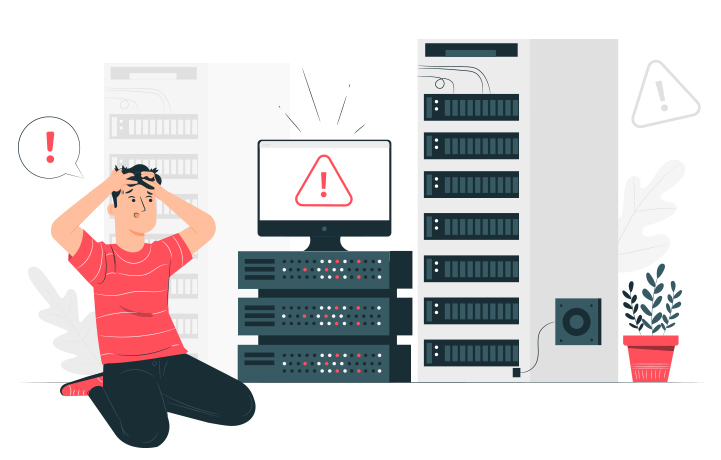Data backups and the online backup strategy
Last Updated: February 9th, 2023 3 min read Servers Australia

Most business owners know the value of having data backups in case of a system failure. But if you’re only making on-site backups — either to an external hard drive or a USB thumb drive — you’re leaving your data vulnerable.
Regardless of your industry, you’re likely storing information that is critical to your business continuity. Information like billing records, product databases, and personnel files serve as the heart of your operations. Protecting this irreplaceable data requires a comprehensive backup strategy with both on-site and off-site components. What are backups?
On-site Backups
On-site backups include any method used and stored at the same location as your primary data source. In addition to external hard drives and thumb drives, your organisation may use tape backups, internal servers, network-attached drives or DVDs to back up your data.
The common problem with all these methods is that they fall prey to the same hazards as your primary data. Fires, floods, sabotage, and theft can affect both primary and backup data stored in the same location. So consider building a disaster recovery plan for your business. How to develop an IT small business disaster recovery plan.
Many organisations conduct incremental backups on a daily basis, along with full backups at more-frequent intervals. An appropriately planned, well-executed on-site backup strategy can replace your data in the event of system failure — including computer viruses, hardware or software malfunction, or file deletion — but cannot help you in all situations.
No matter how many different types of media you incorporate, using only on-site backups makes you vulnerable to a single point of failure that could leave all versions of your data damaged or destroyed.
Creating Off-site Backups
As part of your disaster recovery plan, consider backing up critical data off-site. By keeping a copy of your important files in a different location than your main data source, you protect your business against loss of critical information caused by a variety of catastrophic situations. If your building burns or floods, you may lose computers and other infrastructure, but you can use your off-site backups to quickly restore your data and return your business to operational status.
You can use a manual method for creating and storing your off-site backups yourself; for instance, by saving to optical storage media or optical tapes that are swapped out daily or more often.
However, electronic, remote backup services managed by professionals are significantly more convenient, flexible and reliable for most types of businesses.
The Hybrid Online Backup Strategy
Hybrid online backups — also known as hybrid on-site and off-site data vaulting — can provide your business with the best of both worlds when it comes to data protection. A combination of on-site and off-site backups allows you to quickly recover from minor glitches, such as a lost or damaged file, as well as major events that cause widespread or total data loss.
For your off-site backups, a professionally managed cloud service gives you fast, reliable and convenient access to your data at any time. With your off-site backups stored in the cloud, you can feel confident that your business is protected against data loss caused by theft, natural disasters, power failures and other causes.
Which Backup System Is Best?
Ultimately, the best backup system is one that your organisation uses regularly and that performs well when you most need it. By employing both on-site and off-site, cloud backups, you give your business the best possible protection against catastrophic data loss.
